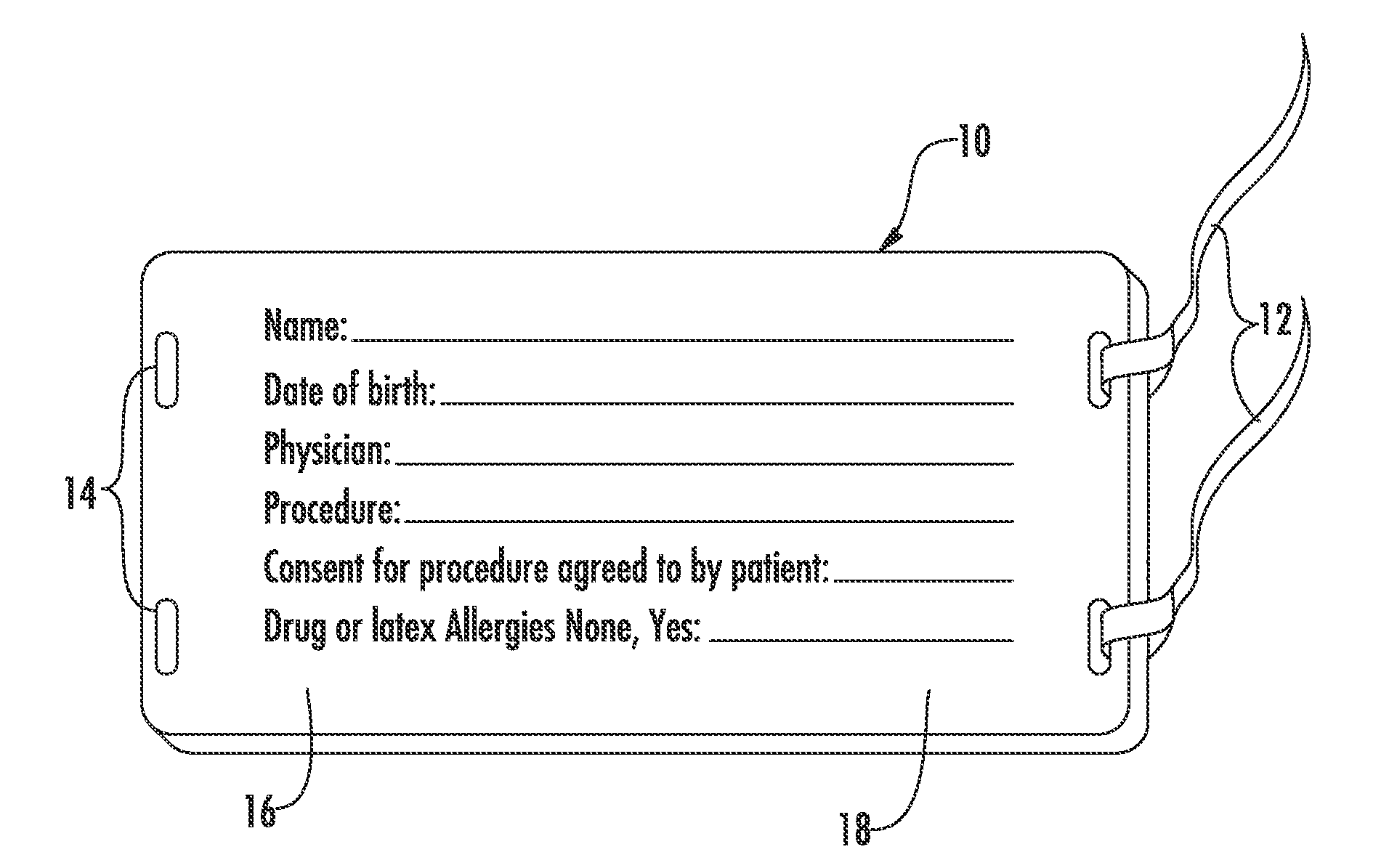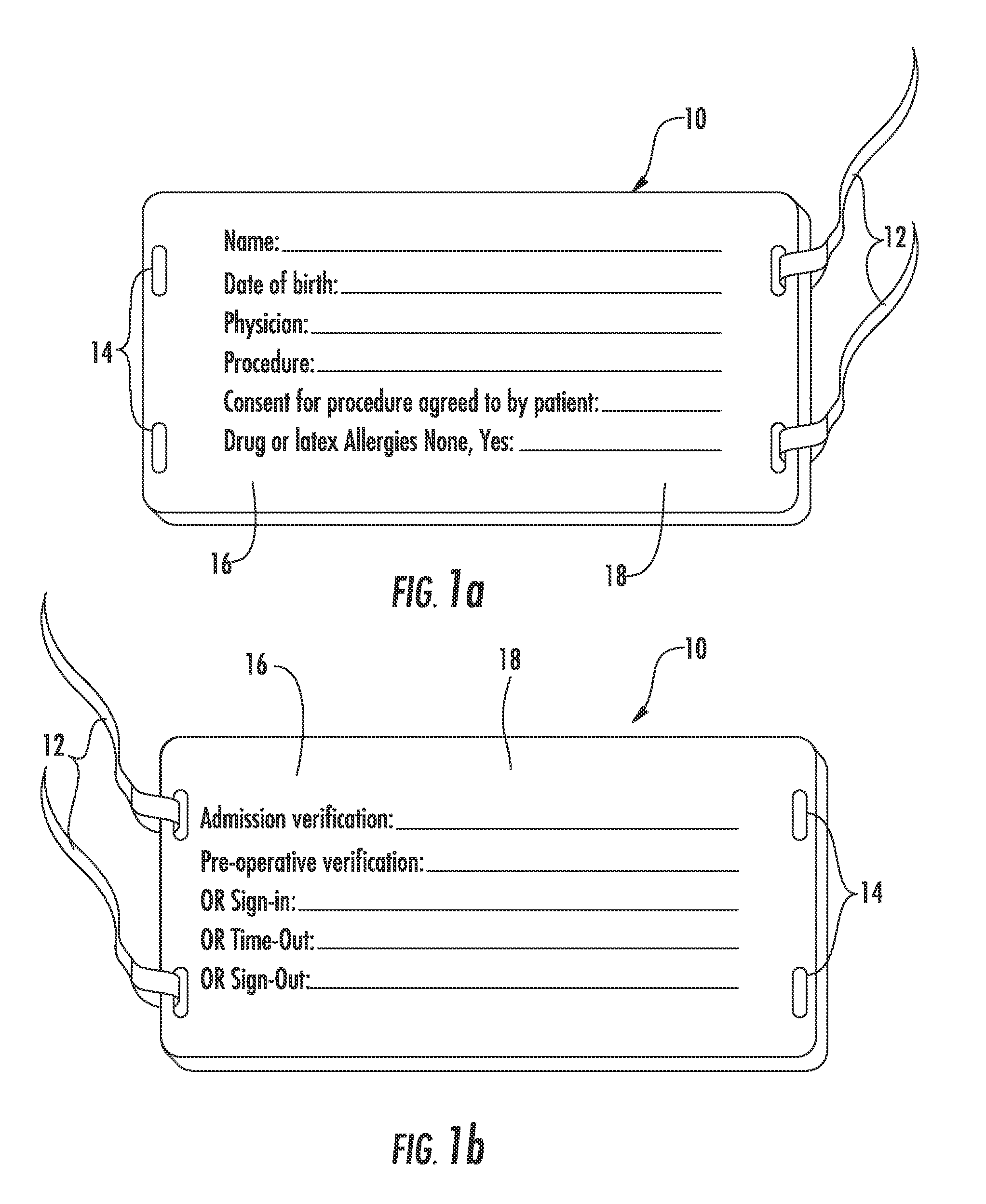Safe operative surgery tag identification card system
a tag identification and operative surgery technology, applied in the field of tag identification card system, can solve the problems of failure to implement any system that is fail-safe, difficult to concentrate on the operative suite, and mishaps in patient identification
- Summary
- Abstract
- Description
- Claims
- Application Information
AI Technical Summary
Problems solved by technology
Method used
Image
Examples
Embodiment Construction
[0015]Now referring to the drawings, the tag identification (ID) card system of the present invention is shown and generally illustrated in FIGS. 1a and 1b. As can be seen the identification tag 10 shall be made of a non-irritating synthetic material. It shall be of similar size to a USA Hospital Addressograph plastic plate, preferably approximately 86 mm×55 mm or roughly “3⅜”ד2⅛”. This Tag ID Card 10 shall have pre-attached straps 12 or a hole or holes 14 for threading a strap device 12 allowing the Tag ID Card 10 to pre-operatively attached to the patient's extremity. Preferably the Tag ID Card is attached to an arm or leg of the patient and more preferably to the arm, as it is likely to be in view of the anesthesiologist and therefore, increase the likelihood of being completed. If there are no extremities, it may be placed or hung around the patient's neck.
[0016]The Tag ID Card 10 shall have pre-printed information 16 that includes: name, date of birth, physician, procedure, co...
PUM
 Login to View More
Login to View More Abstract
Description
Claims
Application Information
 Login to View More
Login to View More - Generate Ideas
- Intellectual Property
- Life Sciences
- Materials
- Tech Scout
- Unparalleled Data Quality
- Higher Quality Content
- 60% Fewer Hallucinations
Browse by: Latest US Patents, China's latest patents, Technical Efficacy Thesaurus, Application Domain, Technology Topic, Popular Technical Reports.
© 2025 PatSnap. All rights reserved.Legal|Privacy policy|Modern Slavery Act Transparency Statement|Sitemap|About US| Contact US: help@patsnap.com


